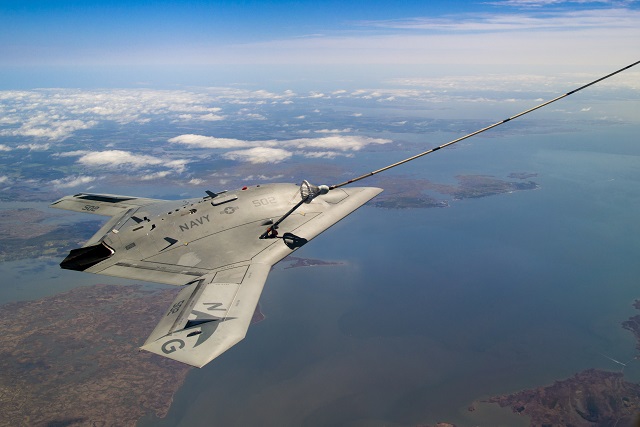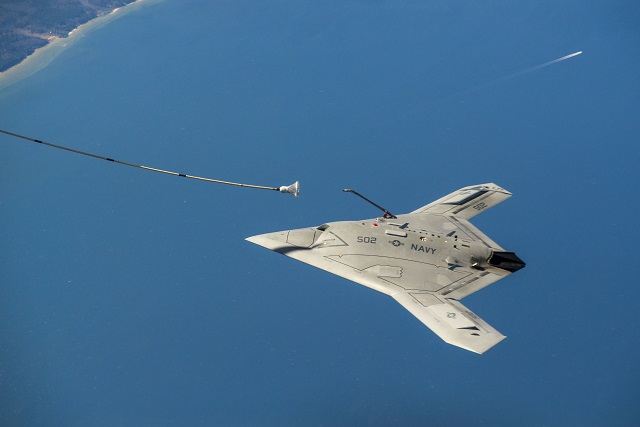 X-47B successfully completes the first autonomous aerial refueling demonstration over the Chesapeake bay on April 22. (Photo courtesy of U.S. Navy) |
|||
"We
are very pleased with the outcome of this first round of probe and drogue
flights with the X-47B," said Pablo Gonzalez, UCAS-D program manager,
Northrop Grumman Aerospace Systems. "The AAR system and X-47B both
performed as expected. While we would certainly benefit from additional
probe and drogue flight testing, we have reached a tipping point at which
AAR is now feasible." Northrop Grumman began developing AAR technology for both Navy and Air Force application nearly a decade ago, pioneering a "hybrid" approach that integrates both GPS and infrared imaging to enhance navigational precision and hedge against GPS disruption. Initial UCAS-D flight testing began in 2012 using a manned Learjet as a surrogate for the X-47B. These successful proof-of-concept flights demonstrated the overall feasibility of the X-47B AAR system and helped refine its navigation, command and control, and infrared sensor processing components. Northrop Grumman is the Navy's UCAS-D prime contractor. The UCAS-D industry team includes Lockheed Martin, Pratt & Whitney, GKN Aerospace, Eaton, General Electric, UTC Aerospace Systems, Dell, Honeywell, Moog, Wind River, Parker Aerospace, Sargent Aerospace & Defense, and Rockwell Collins. Link to X-47B UCAS-D Unmanned Combat Air System Demonstrator technical datasheet |
|||
NGC, US Navy X-47B Unmanned Aircraft Demonstrates the First Autonomous Aerial Refueling
- Posted On











